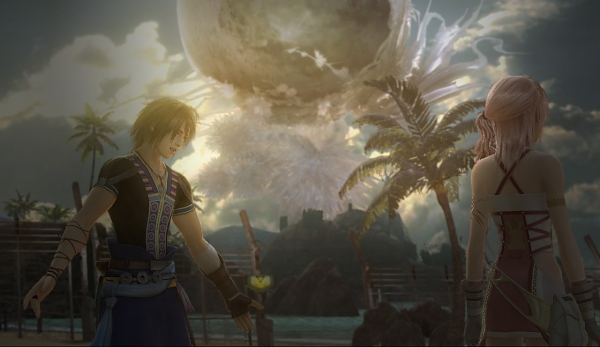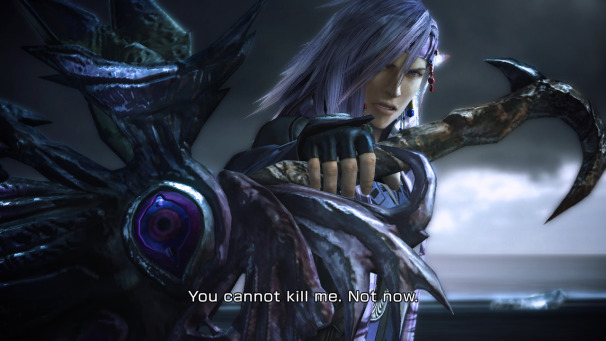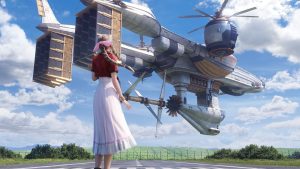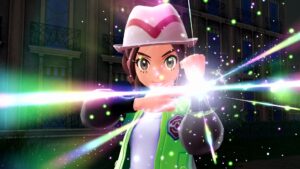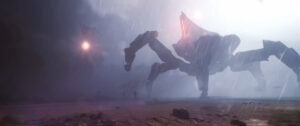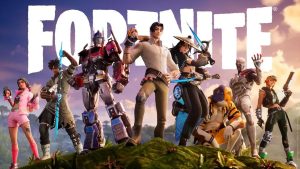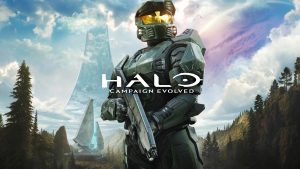The current console generation is remarkable for how many exciting new IPs it has introduced over the last six years, game franchises that will probably undoubtedly go on to become revered classics in time. Series like Mass Effect, Uncharted, Assassin’s Creed and Gears of War are just a slice of the pie that is indicative of the incredible creativity on display, and altogether, they should make a gamer happy.
On the other end of the spectrum, this shall also probably be regarded as the generation when several old, fan favorite franchises were ruined and destroyed by studio mismanagement and mishandling, or by baffling design decisions that were probably made in context of the increased stress and pressure that HD game development brings to the table. This is the generation that saw the creative death (at least as far as long time series fans were concerned) of beloved franchises like Resident Evil, Megaman, Gran Turismo, Metroid, and perhaps most notably, Final Fantasy.
For decades, Final Fantasy had been a pillar of console gaming. A new release in the franchise was an industry wide event. Its platform of choice for release could change the tide of the console wars. Square Enix’s multi volume magnum opus was notable for constantly innovating, taking risks, and being the pall bearer of JRPG innovation, leading the way forward for all console role playing adventures. And as the Japanese game industry floundered (taking down the JRPG genre, which had been in its prime just a decade ago, with it), all fans and industry veterans were hopeful that 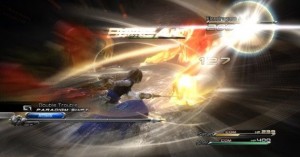 Square’s long awaited Final Fantasy XIII would revive the struggling genre and once again provide an entire industry with a template it could confidently follow.
Square’s long awaited Final Fantasy XIII would revive the struggling genre and once again provide an entire industry with a template it could confidently follow.
Except it didn’t. More than perhaps any other title in history, Final Fantasy XIII was a disaster. Riddled with questionable design decisions and bogged down with poor characterization and a story that fed the clichés that the series itself had helped establish not so long ago, repetitive gameplay, and a series structure that departed so significantly from the norm that the game was a JRPG in name only, fans protested loudly, and took to criticizing the game vocally. The game’s few welcome innovations, like the Paradigm battle system, were forgotten as the game came to symbolize the monumental failure of the Japanese gaming industry to keep up with the pace of console development.
Two years later, then, Square Enix releases a direct sequel to the game, only the second time they have done so in series history (not counting the Final Fantasy VII saga, or spin offs like Final Fantasy IV: he After Years and Final Fantasy XII: Revenant Wings), for a game that no one really wanted a sequel for. They promised they would fix everything that was wrong with the original Final Fantasy XIII, and it is clear that they hope to restore some of the sheen that the Final Fantasy name has lost with this release. Many view this game as a cynical cash in attempt, which it probably is. However, all of this is missing the point: just how good is the game when viewed on its own?
And the answer to that is surprising. Final Fantasy XIII-2 actually does live up to Square’s promise of addressing all the issues plaguing the original release, it realizes the stunted potential of that game, and it stands as a darned good JRPG in its own right, possibly as the best Final Fantasy release this side of the Playstation classic Final Fantasy IX. High praise for a game that many had decided to brush aside, I know.
The most obvious change that Square Enix made with the game was obviously its overall structure. For those of you who actually stuck with XIII  for more than a few hours, you will remember how the game was an endless walk down linear, restricted corridors, fighting one wave of enemies after another, with no breaks, no towns, no exploration, so that more than anything else, the game resembled a corridor shooter. And while it did open up later, by that time, the damage was done, and it never could quite live up to that exploratory feeling of adventure that every other game in the series had offered.
for more than a few hours, you will remember how the game was an endless walk down linear, restricted corridors, fighting one wave of enemies after another, with no breaks, no towns, no exploration, so that more than anything else, the game resembled a corridor shooter. And while it did open up later, by that time, the damage was done, and it never could quite live up to that exploratory feeling of adventure that every other game in the series had offered.
Well, Final Fantasy XIII-2 attempts to address that issue with a new addition known as the Historia Crux. This allows the players to largely determine how to proceed with their adventure, by letting them travel to different areas at will, and also allowing for past, present and alternate dimensional incarnations of those same areas to be accessed. There will be some times when the game directs your progress if it is important for the story, but then, every other RPG in history has done that, so you can’t fault Final Fantasy XIII-2 for this. Yes, it doesn’t quite live up to the sheer scope, expanse and openness of say, Final Fantasy XII, but it’s a massive improvement over the original XIII and on the whole, lets the player feel more in control of the adventure.
Final Fantasy XIII-2 has also taken it upon itself to refine the battle system of the original XIII. I will admit I had my trepidations about this to begin with – for all my contempt of the original game, the battle system was the one thing that I eventually felt was good about it. It was fast, frentic, allowed for real time decision making, and was a natural evolution of the series’ turn based design. So why mess with what wasn’t broken?
However, Square has largely preserved the battle design, only tweaking it somewhat to improve it and make it a bit more accessible from the get go. For instance, the level caps that the original game imposed are gone, paradigm shifts now allow you to target multiple enemies, the death of 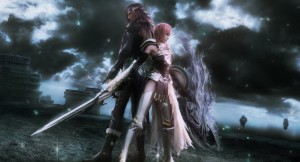 your party leader no longer means automatic defeat, and both Noel and Serah, the main characters in the game whom you will be largely controlling, can learn all six classes. This obviously opens up more options for customizing your party, more so than the original game allowed at any rate, since ultimately, the game gives you the option to create various paradigms around the abilities that class specializations for each of your party members allow for.
your party leader no longer means automatic defeat, and both Noel and Serah, the main characters in the game whom you will be largely controlling, can learn all six classes. This obviously opens up more options for customizing your party, more so than the original game allowed at any rate, since ultimately, the game gives you the option to create various paradigms around the abilities that class specializations for each of your party members allow for.
In fact, customization is the name of the game as far as the battle system is concerned. Square Enix, like Blizzard, seem to have taken a book out of Nintendo and Game Freak’s book, as the third slot in your party is always occupied by a monster you can recruit once you defeat it in battle. Each monster has one specific class that you can level up as well, and keeping the various specialties of your monsters turns out to be instrumental when customizing and creating your own paradigms later on in the game. The entire monster hunting and training aspect adds a wrinkle of strategy to the battle system, and there is that familiar thrill of stalking your prey and finally recruiting it that all Pokémon masters should be familiar with by this point.
As a matter of fact, it is good that the monster hunting aspect adds the layer of strategy because the refinements to the battle system have also had some unnecessary, negative fallouts. For instance, the entire paradigm system has been so optimized that it is entirely possible to Auto Battle your way through most of the game, except for some boss battles which require active participation. This reduces your role in the game to that of a passive observer, and while you can always ignore the Auto Battle option and choose to manually select your commands, on the whole, the new system is certainly far more unbalanced and exploitable than the old one was.
There are other, minor gameplay changes that lend the game an illusion of freedom, more so than the original XIII in any case. For instance, cinematic quick time events require active participation, giving you the impression of being in control even during cutscenes; dialog options abound, though most of these are almost as inconsequential as The Legend of Zelda’s famed ‘Yes/No’ conversation options. Don’t go looking for Mass Effect levels of dialog interactivity here. Finally, the entire time travel mechanic is 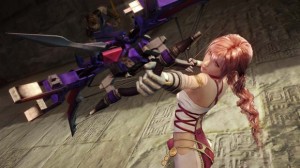 more of a narrative requirement in this game. As much as XIII-2 is a direct sequel, it tries to escape following any restrictions placed on it by its prequel (or to place any restrictions on its inevitable sequel) by taking place in an alternate timeline, rife with paradoxes that openly contradict each other, inconsistent with themselves and with the events of the previous game as well. The entire story is an incomprehensible mess, which is a shame considering how abstract and unexpectedly human, if a bit cliché, FFXIII’s story was. And after trying my best to keep up for the first few hours or so, I just gave up on the attempt, and instead tried to focus on the characters.
more of a narrative requirement in this game. As much as XIII-2 is a direct sequel, it tries to escape following any restrictions placed on it by its prequel (or to place any restrictions on its inevitable sequel) by taking place in an alternate timeline, rife with paradoxes that openly contradict each other, inconsistent with themselves and with the events of the previous game as well. The entire story is an incomprehensible mess, which is a shame considering how abstract and unexpectedly human, if a bit cliché, FFXIII’s story was. And after trying my best to keep up for the first few hours or so, I just gave up on the attempt, and instead tried to focus on the characters.
Which was also a mistake. As bad as the story is, the characters are worse. You thought Final Fantasy XIII had annoying characters? You haven’t seen anything until you’ve spent upwards of thirty hours with Noel and Serah. Typical, cliché, one dimensional, and highly predictable, the characters make you want to cringe, and the best characters, like Lightning and the new, Sephiroth evoking Caius, are all relegated to secondary roles, which is a shame.
What’s even worse than the story and the characterization is the ending (or endings) they inevitably lead up to. To be perfectly honest, I was able to shelve any involvement in the game’s story and characters so that they would not interfere with my enjoyment of the game, but the ending feels like a slap to the Square Enix faithful. What is arguably the lamest ending in a series famed for having some of the best endings in game history, a cop out and one that does lend further credence to the ‘cash in’ theory by setting up another sequel. I’m not allowed to talk about any of the game’s endings much, but suffice it to say, they come off as a massive disappointment.
I know this review comes off as largely negative, but trust me, this game deserves your time. It is one of the best console JRPGs in the last five years, and it is a rare case of a developer having listened to its fanbase’s complaints with a game, and then having actually addressed all of those complaints. It plays excellently, has a beautiful soundtrack, great graphics, and while the poor story and characterization detract from the experience somewhat, overall, the game is a thirty hour romp of JRPG goodness. Final Fantasy XIII-2 represents a tentative step for its genre into modernity.
This game was reviewed on the Xbox 360.
Great graphics; Excellent music; Battle system is refined and tweaked, and adds an element of strategy: Game addresses all the complaints about linearity from the original
Poor characterization; Convoluted story: Disappointing ending









